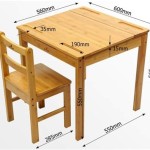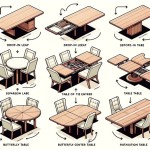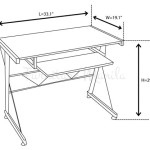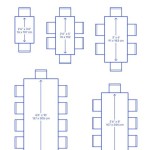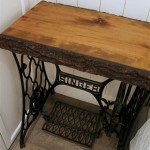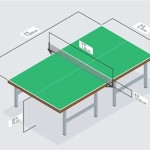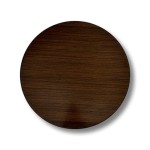Mid-Century Modern Side Tables: A Timeless Accent
Mid-Century Modern (MCM) design, an aesthetic movement that flourished from the mid-1940s to the mid-1960s, continues to exert a powerful influence on contemporary interior design. Characterized by clean lines, organic shapes, a focus on functionality, and the use of innovative materials, MCM emphasizes both form and practicality. Within this design philosophy, the side table occupies a pivotal role. More than just a surface, the Mid-Century Modern side table serves as a functional art piece, complementing larger furnishings and contributing to the overall aesthetic of a room.
The enduring appeal of MCM side tables stems from their versatile nature. They can seamlessly integrate into a variety of spaces, from living rooms and bedrooms to home offices and even entryways. Their relatively small footprint also makes them ideal for smaller living spaces or for filling in awkward corners. Furthermore, the wide range of available styles ensures that there's an MCM side table to suit almost any taste and interior scheme.
Key Features of Mid-Century Modern Side Tables
Several defining characteristics distinguish Mid-Century Modern side tables from other furniture styles. These features reflect the broader design principles of the movement and contribute to their timeless appeal.
Clean Lines and Geometric Shapes: One of the hallmarks of MCM design is the emphasis on clean lines and geometric shapes. Side tables from this era often feature simple, uncluttered silhouettes. Legs are typically tapered and angled, contributing to a sense of lightness and airiness. Table tops may be round, square, rectangular, or even asymmetrical, but they almost always prioritize simplicity and functionality. Ornamentation is generally minimal, with the focus instead being on the inherent beauty of the materials and the purity of the form.
Use of Natural Materials: Mid-Century Modern designers embraced natural materials, particularly wood, in their furniture creations. Walnut, teak, oak, and birch were commonly used for side tables, often showcasing the natural grain and beauty of the wood. These materials were chosen not only for their aesthetic qualities but also for their durability and warmth. In addition to wood, other materials such as glass, metal (often chrome or brass), and laminate were sometimes incorporated into MCM side tables, creating interesting contrasts and textures.
Focus on Functionality: While aesthetics were important, Mid-Century Modern design also placed a strong emphasis on functionality. Side tables were designed to serve a practical purpose, providing a convenient surface for lamps, books, drinks, or other everyday items. Some side tables incorporated additional features, such as drawers or shelves, to further enhance their utility. The careful consideration of ergonomics and usability is a key aspect of MCM design, ensuring that these pieces are not only beautiful but also comfortable and practical to use.
The combination of these features – clean lines, natural materials, and a focus on functionality – results in side tables that are both visually appealing and highly practical. Their understated elegance allows them to blend seamlessly into a variety of interior styles, from minimalist to eclectic.
Popular Styles and Designs
Within the broader category of Mid-Century Modern side tables, several distinct styles and designs emerged. These variations reflect the diverse influences that shaped the movement and the creativity of the designers who embraced it.
The Atomic Age Influence: In the post-World War II era, there was a fascination with science and technology, particularly with the atom. This influence is evident in some MCM side table designs, which feature abstract shapes and geometric patterns reminiscent of atomic diagrams. These tables often incorporate materials like metal and laminate, reflecting the futuristic aspirations of the time. Some designs even featured starburst motifs or other space-age details.
Scandinavian Modern: Scandinavian Modern, a sub-style of MCM, emphasized simplicity, functionality, and the use of natural materials. Scandinavian-inspired side tables typically feature light-colored woods like birch and oak, with clean, minimalist designs. They often have gently curved edges and tapered legs, creating a sense of warmth and inviting appeal. The focus is on creating functional and beautiful objects that enhance everyday life.
The "Eames Era" Influence: Charles and Ray Eames were among the most influential designers of the Mid-Century Modern era. Their innovative use of materials like molded plywood and fiberglass revolutionized furniture design. While they may not have designed a vast array of side tables specifically, their influence is evident in many MCM side table designs that feature similar materials and techniques. Their emphasis on creating accessible and affordable modern furniture had a profound impact on the design landscape.
Drum Tables and Pedestal Tables: Drum tables, characterized by their cylindrical shape, were a popular choice in MCM interiors. These tables often featured a simple wooden or metal base and a round top, providing a stable and functional surface. Pedestal tables, with a single central support, also gained popularity during this period. These tables offer a clean and uncluttered look, making them ideal for smaller spaces.
These are just a few examples of the many styles and designs of Mid-Century Modern side tables that emerged during this influential period. Each variation reflects the unique aesthetic sensibilities and functional considerations of the designers who created them.
Materials and Construction Techniques
The materials and construction techniques used in Mid-Century Modern side tables played a crucial role in defining their aesthetic and functional qualities. The designers of this era experimented with a wide range of materials, both natural and synthetic, and developed innovative techniques to create durable and visually appealing furniture.
Wood Selection and Finishing: As previously mentioned, wood was a primary material used in MCM side tables. The selection of wood species was carefully considered, with hardwoods like walnut, teak, and oak being favored for their durability and rich grain patterns. Softer woods like birch were also used, particularly in Scandinavian-inspired designs. The finishing techniques employed often emphasized the natural beauty of the wood, with clear lacquers and oil finishes being commonly used to protect the surface and highlight the grain. Staining was also used to achieve different color tones, but the focus was typically on enhancing the natural character of the wood rather than obscuring it.
Metal and Glass Accents: Metal accents, often in the form of chrome or brass, were frequently incorporated into MCM side table designs. Metal legs, bases, or decorative details added a touch of sophistication and modernity to these pieces. Glass was also used for table tops, creating a clean and minimalist look. The use of these materials in conjunction with wood created interesting contrasts in texture and color.
Laminate and Plywood: The development of new synthetic materials like laminate and plywood significantly impacted furniture design during the Mid-Century Modern era. Laminate, a durable and versatile surface material, was often used for table tops, providing a smooth and easy-to-clean surface. Plywood, made from thin layers of wood veneer glued together, allowed designers to create curved and molded forms that were previously impossible to achieve with solid wood. Charles and Ray Eames were particularly innovative in their use of plywood, and their designs helped to popularize this material in MCM furniture.
Construction Techniques: The construction techniques used in MCM side tables were often straightforward and functional, reflecting the emphasis on simplicity and efficiency. Joinery techniques such as mortise and tenon joints, dovetail joints, and dowel joints were commonly used to create strong and durable connections. The use of screws and other fasteners was minimized, with the focus being on creating a clean and seamless appearance.
The combination of carefully selected materials and innovative construction techniques resulted in Mid-Century Modern side tables that are both aesthetically pleasing and built to last. Their durability is a testament to the quality of craftsmanship that went into their creation.
Ultimately, a Mid-Century Modern side table is more than just a piece of furniture; it is a statement of style and a celebration of functional design. Its enduring appeal lies in its ability to seamlessly blend form and function, creating a timeless accent that enhances any living space.

Mid Century Side Tables Acorn West Elm

Reeve Mid Century Side Table 28 West Elm

Mid Century Modern Side Table Makeover Sarah Hearts

Mid Century Side Table 55 Cm West Elm

Stein Mid Century Modern Walnut Brown Nightstand Midinmod Tx

Mid Century Modern Side Table Makeover Sarah Hearts

Mid Century Modern Nightstands Under 200 Brepurposed Nightstand Bedroom Affordable

Mid Century Modern Side Table Makeover Sarah Hearts

Mid Century Modern End Table From Dutchcrafters Amish Furniture

Walker Edison Furniture Company Mid Century Modern 2 Drawer Wood Nightstand Pack Walnut Hd8281 The Home Depot
Related Posts

